This is a Purma Special, an all Bakelite snapshot camera produced by Purma Camera, Ltd., England starting in 1937. The Purma Special shoots sixteen 32mm x 32mm images on 127 roll film. It is a simple fixed focus camera with an extremely unique gravity controlled metal blade focal plane three speed shutter that changes speeds depending on the orientation of the camera. The Purma Special was a capable and inexpensive camera, allowing it to remain in production until around 1951, making it one of the longest produced cameras built in England.
Film Type: 127 Roll Film (sixteen 32mm x 32mm exposures per roll)
Lens: 2 ¼” (~57mm) f/6.3 Beck Anastigmat uncoated 3-elements
Focus: Fixed, 10 feet to Infinity (a set of six auxiliary lenses were available for close-ups)
Viewfinder: Optical Direct Vision Scale Focus
Shutter: Purma Gravity Focal Plane Metal Blade
Speeds: 1/25, 1/150, and 1/450
Exposure Meter: None
Battery: None
Flash Mount: None
Weight: 340 grams
Manual: https://www.cameramanuals.org/pdf_files/purma_guide.pdf
How these ratings work |
The Purma Special was an innovative camera not only because of it’s three speed gravity controlled shutter, but also it’s low price allowed it to open the doors to photography to many who couldn’t otherwise afford it. Many of these cameras were sold before, during, and after the war, making it one of Britain’s most important camera. The simple design of the shutter means that most of these can still be used today, making them for an interesting piece of history that also still works. | ||||||
| Images | Handling | Features | Viewfinder | Feel & Beauty | History | Age | |
| 1 | 1 | 0 | 1 | 2 | 2 | 30% | |
| Bonus | +1 for pioneering one of a kind shutter design | ||||||
| Final Score | 10.1 | ||||||
Prologue
A condensed version of this review was originally published on Casual Photophile earlier this year. James sent me this camera for review and I agreed to write a review for his site, but I originally wrote too much for what he needed, so I agreed to wait a couple months and republish the original unedited “director’s cut” of my look at the Purma Special.
History
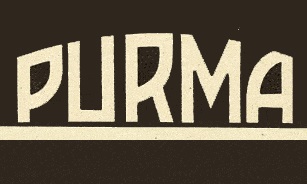 The Purma Camera company was founded in 1935 by British painter and commercial poster artist, Tom Purvis and inventor, Alfred Croger Mayo with funding provided by David Brock of Brock Fireworks. The company was formed in London with the intent to build a camera around a unique focal plane shutter concept designed by Mayo in 1933. The name “Purma” is an amalgam of the last names of both Purvis and Mayo.
The Purma Camera company was founded in 1935 by British painter and commercial poster artist, Tom Purvis and inventor, Alfred Croger Mayo with funding provided by David Brock of Brock Fireworks. The company was formed in London with the intent to build a camera around a unique focal plane shutter concept designed by Mayo in 1933. The name “Purma” is an amalgam of the last names of both Purvis and Mayo.
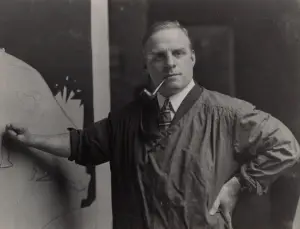
At the time of Mayo’s first shutter patent, there were no inexpensive options for cameras with focal plane shutters. The few cameras that had them such as the Leica, Contax, or Graflex Speed Graphic used complicated cloth, or in the case of the Contax, metal drum systems in which a spring tensioned curtain would open and close a specific amount of time before a second curtain to set the shutter speed. Although these shutters worked well, they required a high level of precision and were expensive to build and sell.

Mayo came up with the idea of a focal plane shutter that used two curved metal curtains both with rectangular openings which allowed light to pass through them. The inner curtain was connected to a rotating brass weight, that depending on it’s orientation, would change the inner curtain’s position, creating a slit between it and the outer curtain. This allowed for three different sized openings that would allow an increasing amount of light through, depending on the orientation of the camera. At the fastest speed, the slit was about 1/16″ wide, 1/8″ at the medium speed, and 1/2″ at the slowest speed.
The brass weight served a second purpose as it’s weight also affected the speed at which the curtains would move. With the camera held sideways in the slow speed position, the weight was nearest the ground. When firing the shutter, it would have to move up against the force of gravity. This motion would slow down the movement of the shutter curtains, resulting in a shutter speed of approximately 1/25. With the camera held sideways in the fast speed position, the weight was nearest the top so that firing the shutter would cause it to fall with the force of gravity, speeding up the movement of the shutter curtains, resulting in a shutter speed of approximately 1/450. Finally, an in between speed could be obtained with the camera held horizontally where the brass weight neither had to overcome gravity or be assisted by it, resulting in a shutter speed of approximately 1/150.
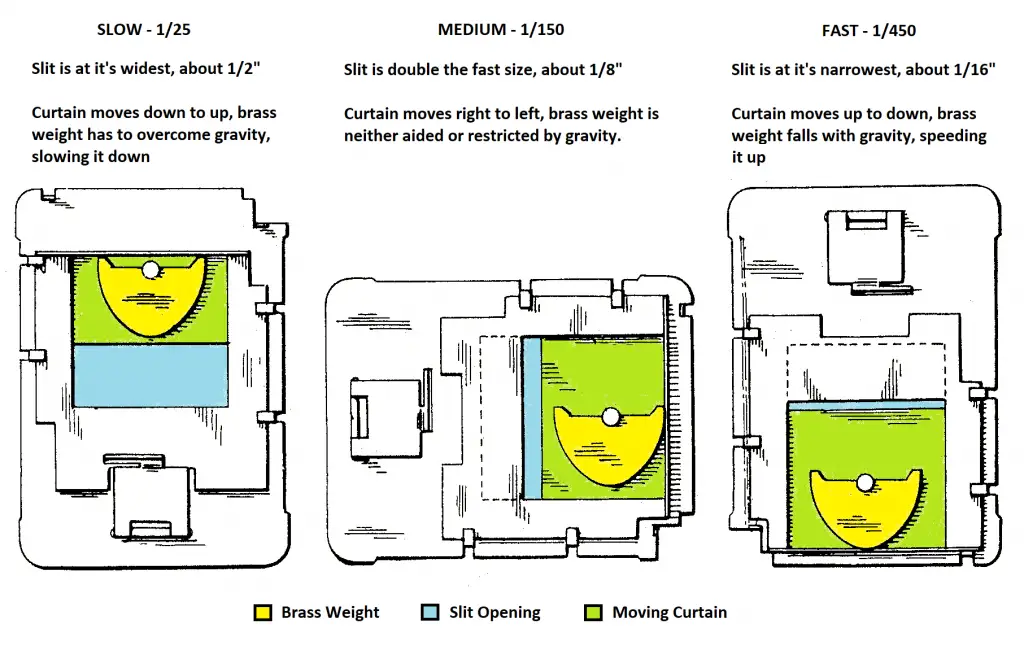
Despite it’s unorthodox design, Mayo’s shutter worked really well and because of it’s simplicity, was very reliable. Barring physical damage, the shutters found on these cameras rarely failed. Another benefit to the simple design that it could be produced cheaply. Most of the parts were made of stamped metal, not requiring any precision machining like in more complex focal plane shutters. The number of individual parts was kept to a minimum requiring less raw materials. Finally, since speeds were changed automatically based on the orientation of the camera, no additional parts like a shutter speed dial were required, further keeping costs low.
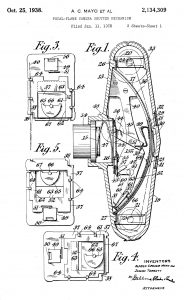
Looking through patent records filed between 1933 and 1935, it appears that Mayo’s shutter was ready to go by the time Purma was founded, which allowed them to release their first camera only a couple of months later. In June 1936, the first model called the Purma Speed was released.
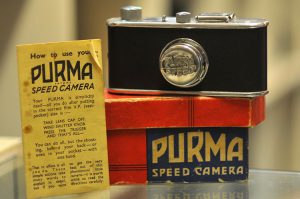
The Purma Speed had an all metal body with a 2-element lens, and a flip up viewfinder. It used the same three speed shutter explained above, but added a knob on the top plate of the camera that altered the width of the slit at each of the three positions, adding three extra speeds, bringing the total to six speeds. The Purma Speed was inexpensively priced at 35 shilling, and used 127 “Vest Pocket” roll film which allowed for 16 square exposures at a cost of 1 shilling per roll. The decision to shoot square exposures was to prevent changing the aspect ratio of each image as you rotated the camera to select different speeds. No matter how you oriented the camera, you would always get a square exposure.
A year after it’s release, a second camera called the Purma Special made it’s debut. The Purma Special used the same three speed shutter as the Purma Speed, but lost the two range dial on the top, limiting it to only three speeds. The lens was now a 3-element f/6.3 Beck anastigmat. The inner lens elements were said to be “bloomed” which I interpret to mean some form of early lens coating, to reduce flare. The flip up viewfinder was replaced by a through the body direct vision viewfinder.
The most significant change was a new body, entirely made of Bakelite, and with a distinct shape that was wider in the center than the edges. Many sources online credit the design of the body to famous French-American industrial designer, Raymond Loewy, but according to Richard Jemmett’s “The Purma Camera Book”, no evidence exists that Lowey ever had anything to do with the camera, at least not directly. Lowey did have a London office at the time the Purma Special was being built, so it’s plausible credit was given to him to help make the camera more fashionable, but a better explanation was that company founder Tom Purvis had a hand in it’s design. Purvis was already a well respected artist, having created posters used by the London and North Eastern Railways, and competing in art competitions at both the 1928 and 1932 Summer Olympics, so it stands to reason that he might have responsible for it’s art deco design.
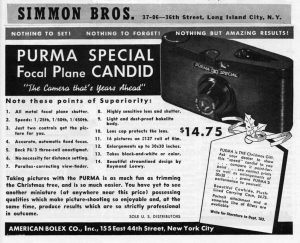
The Purma Special proved to be very popular, both in England and in other countries. The camera was exported to the United States and sold in January 1939 for $14.75 which when adjusted for inflation, compares to about $275 today.
In my research for this article, I found no evidence of production numbers or a date when the camera was discontinued. In 1951, Purma would release a third and final model called the Purma Plus, which suggests that perhaps this is when the Purma Special was discontinued, but it’s plausible that both could have been made at the same time.
The Purma Plus retained the same shutter and most of the features of the Special, with the biggest change being a return to a metal body, but other changes include double image prevention, an accessory shoe, and the Beck Anastigmat lens was color coated.
The Purma Plus was produced until 1959 at which time, Purma stopped making cameras. I found no explanation for why the company didn’t continue past this date, but a logical reason would be that the need for the company’s basic cameras was no longer needed. Other companies had found ways to release less expensive and more accessible cameras, negating Purma’s value proposition.
A fourth model, commonly referred to as the Purma SAMA may have existed in prototype form. Patent documentation with a file date of September 25, 1950 shows a camera that looked unlike any of the three other Purma models. The patent is credited to Alfred Croger Mayo and has what looks to be an all new vertically traveling focal plane shutter. The presence of a sprocketed shaft, a rectangular film gate within the film compartment, and what looks to be both a film advance and rewind knob, strongly suggest this camera used 35mm, rather than 127 roll film like all other Purmas.
In the gallery below, you can make out the overall body of the camera in the first image, a rectangular gate and vertical shutter in the second, and a sideways view of the sprocketed shaft, along with an expanded version of the shutter.
Today, opinions are strongly divided among collectors in regards to the Purma Special. Some fondly remember it as the first camera owned by their parents or grandparents growing up, but others chastise it for it’s strange appearance and operation. Although the Purma shutter is simple enough that it rarely fails, Bakelite is fragile and there’s more than a few Purma Specials out there with cracked bodies.
Whichever your opinion, this is a very unique camera with a fascinating design, that similarly to the rotating focal plane shutter in the Univex Mercury CC, showed that some camera designers were willing to think outside of the box to create something new that worked well, and could be made cheaply.
My Thoughts
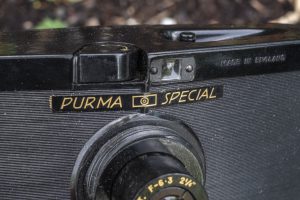
Throughout the history of photography, there are certain cameras that were produced for a long time and in large numbers, but only in one country or region of the world. If you live in that region, those models can be easily be found today for not a lot of money.
Here in the United States, an example of this is the Argus C3. When I first started collecting cameras, I bought one or two C3s, but since then they’ve multiplied, showing up in job lots of other cameras or sometimes donated to me by people who know I like cameras. One time, I was at a garage sale and I saw one for sale, and the guy who was running the sale saw me pick it up and recommended I buy it. After telling him that I had about a dozen at home, he persisted that I should have one more. After trying again to be polite and say no thanks, he offered it to me for $1. In the case with the camera was a nice Weston Meter II so I figured, what the heck and bought it.
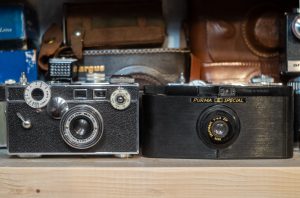
For as common as the Argus C3 is here in the US, they can be hard to find elsewhere. I’ve talked to collectors in the UK who have told me they’ve never seen one in person as they’re too expensive to ship. As it turns out, people living in the UK have their own version of the Argus C3, a camera sold in large quantities for a long time that they can find easily, but is difficult to come across cheaply here in the US.
That camera is the Purma Special. Produced for nearly two decades and sold at bargain prices, there are likely still a large number of these in musty closets and attics all over the country. I had one of these on my “back of the mind” radar for quite some time when fellow blogger, James Tocchio from Casual Photophile asked if I would be interested in reviewing the camera. He sent me this camera with a couple filters and told me to keep it when I was done.
When the camera arrived, it was both bigger and lighter than I had expected. The Argus has an all Bakelite body with metal plates in the front and back, but tips the scales over 700 grams. The Purma doesn’t have the metal plates of the Argus, but I still expected it to be heavier than 340 grams.
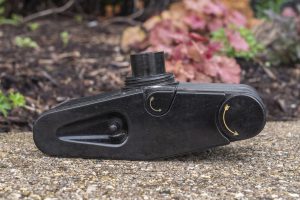
Unlike the Argus which is quite ambitious with an interchangeable lens mount and rangefinder, the Purma Special is about as simple as it gets. In fact, the top plate is where you’ll find everything you need to control the camera. The button inside of the tear drop recess is the shutter release, in the middle is the shutter cocking lever, and finally, the film advance knob. The Purma Special uses 127 roll film, so there’s no need to rewind film, it has a focus free lens, a single aperture, and shutter speeds are controlled by rotating the camera.

A word of caution about the cocking lever is that when it is time to make an exposure, pressing the shutter release causes this lever to quickly fly back to it’s uncocked position. It is critical that nothing obstructs the motion of this lever, as any contact with your hand will throw off the shutter’s motion which will mess up your exposure.
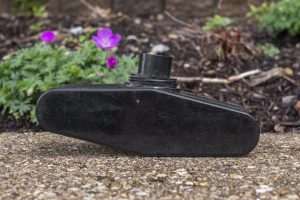
The bottom of the camera has absolutely nothing on it, not even a tripod socket. Without a Bulb or Time shutter mode and no real slow speeds, there really wouldn’t be a good reason to put the Purma Special on a tripod, but it’s worth noting. A tripod socket was added to the later Purma Plus, despite it offering the same three speeds as the Special.
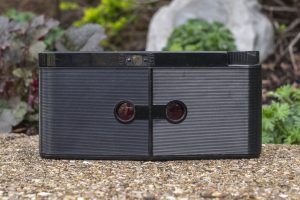
The back of the camera has two round red windows which are both used for exposure numbers on the film’s paper backing. The Purma Special produces sixteen images that are 32mm wide which no 127 film has numbers for, so you must use the numbers one through eight twice, once in each window. Your first exposure is made with the number one in the left window. For the second, turn the advance knob until the number one is in the right window and make your second exposure. For your third, the number two is in the left window, and your fourth is when the number two is in the right window. Keep doing this until after the 16th exposure, which is made with the number eight in the right window.
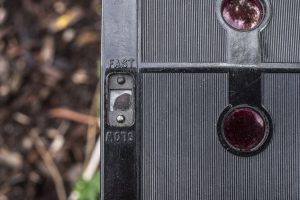
The eye piece is square and has the words “Fast” and “Slow” written on the sides, which is there as a reminder of how to orient the camera for it’s different speeds. Fast is 1/450 second and slow is 1/25 second. Although it is not indicated, holding the camera normally, results in a medium 1/150 speed. Each of these three speeds are rough estimates, but are likely good enough for the latitude of most film that would have been used in the camera.
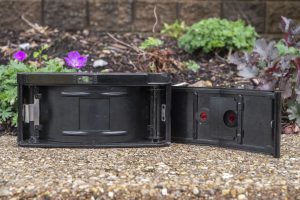
The film door is not hinged and is held on by two clips on either side. Removing it is just a matter of pulling it off. In the image to the right, I have the door sitting on it’s side next to the camera, but it is not attached. The Purma has no light seals, but this doesn’t seem to be a problem as I didn’t encounter any light leaks while shooting it. Film travels from left to right onto standard 127 spools across a curved film plane.
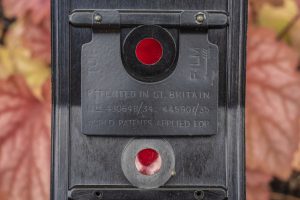
Inside the film door is a small pressure plate that doesn’t quite cover the entire film gate, but obviously did a good enough job that the designers of the camera didn’t need to make it any bigger.
An interesting feature about the Purma Special that’s not obvious is that the two red windows are removeable. When this camera was sold new, it would have come with these two red windows, and a second set of green windows which were to be used with certain panchromatic films. These additional windows are rarely found with Purma Specials as they were very easily misplaced.
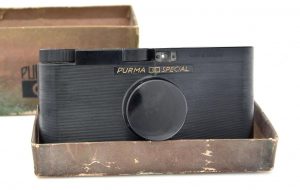
Another easily lost accessory for the Purma Special was it’s threaded lens cap. In normal use, the camera’s lens is spring loaded and sticks out of the body of the camera by about an inch, but when not in use, the cap was designed to keep the lens retracted into the body. This not only helped make the camera more compact, but with the lens cap on, the shutter release would also become locked, protecting the camera from accidental exposures.
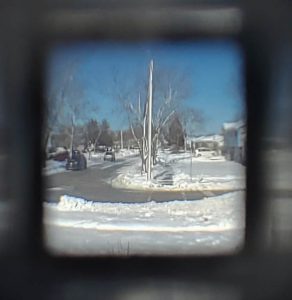
The viewfinder is two simple pieces of plastic that provide a square image which is useful as rotating the camera between “portrait” and “landscape” orientations doesn’t actually change the aspect ratio of the square image. According to R.W. Jemmett’s book, the Purma Special was the first camera to ever use plastic optics in the viewfinder/
The Purma Special is clearly a simple camera, designed to strip photography down to it’s barest form, making it accessible to as many people as possible. Knowing for how long these cameras were produced, they clearly found a customer base, but what are they like to use? Fans of the Argus C3 will tell you the camera produces much better images than it’s appearance suggests, but can the same be said about the Purma Special?
My Results
As I normally do when it comes time to test a 127 camera, I tap into my limited supply of a German film called Supre-Tone that as best as I can tell was made in the 1960s. I am convinced that this orange wrapped 127 film has traveled through time as every roll of it I’ve shot seems to have defied aging. Although originally rated at ASA 50, I’ve shot it at box speed and at 25 and it seems to come out at both speeds.
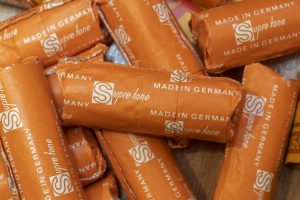
It i’s not unusual for slower black and white films to age well over half a century as I’ve gotten excellent results from equally old Kodak Panatomic-X, but only with their 35mm film. Roll film formats like 127 and 120 have an additional challenge of the backing paper which can wick moisture and build up mold over time, sometimes transferring ink from the paper onto the film itself or worse, rotting it out entirely. Often, the piece of tape that secures the film to the backing paper dries out and loses it’s adhesion causing the film and paper to separate in the camera.
Not with Supre-tone. When I first acquired this film, I had about 18 rolls, and I’ve shot almost half of those, and in nearly every example the images came out great, with little to no problems with fog, ink transfer, rot, or any other anomaly that plagues older roll film. Consider the images below to be indicative of what fresh 127 likely would have looked like when this camera was new(er).
When shooting old cameras, you can never be too sure of what kinds of results you’ll get before you actually shoot it. Sometimes highly regarded cameras can disappoint you, and other times extremely basic cameras can pleasantly surprise you.
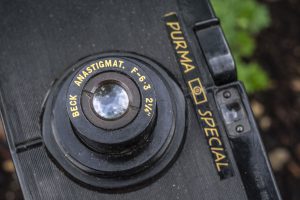
The Purma Special falls in the latter category. While I had an inkling that the results from this strange camera would be decent, I was pleasantly surprised to see a whole roll of properly exposed and reasonably sharp negatives as I pulled the roll of Supre-Tone film from my Paterson tank.
The simple Beck Anastigmat lens produces images with good sharpness in the center that softens near the edges. Vignetting is there in everything I shot, but was really strong in images where the sky was present. With a maximum aperture of f/6.3, some might wish for a faster lens to shoot in more lighting situations, but I quite liked the look of the images I got with the Purma and think that any effort to improve the lens, might have sterilized it’s character.
As it turned out, a film speed of 50 was a perfect match for this camera. The camera’s three shutter speeds allowed me to capture both a sunlit lake, and the inside of a covered bridge with enough latitude so as not to blow out the highlights or reduce shadow detail into a murky mess. I would be willing to bet I could have pushed it to 100, but I wouldn’t wanted to go much beyond that without having to make adjustments in developing.
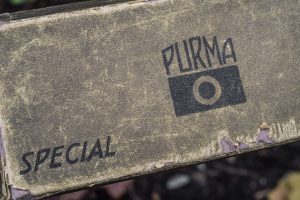
I really enjoyed shooting the Purma and found the simplicity of it’s controls refreshing. It is a lot faster to rotate the body of a camera to change it’s shutter speed than fiddle with a small dial or ring around a lens. It’s focus free operation meant that as long as I stayed at least 10 feet away from my subject, I did not need to be concerned with focus.
I had only two nitpicks with the camera. The first is that the shutter is quite loud when it fires. The internal mechanism makes a loud clang at the end of each exposure. This is not a camera that you’d want to try and shoot where you need to be discreet. The second is that the cocking lever flies back to it’s original position upon firing the shutter, so you must take care to keep your fingers away from it as the shutter is released. If anything obstructs this lever, it will throw off your exposure.
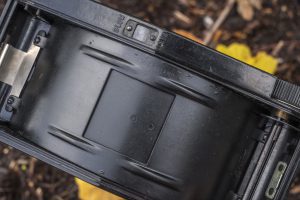
For amateur photographers in the UK during the twenty some odd years Purma cameras were made, Alfred Croger Mayo’s design proved to be a great success. Although strange in design, Purma cameras were extremely simple to use and did an above average job of producing quality images, worthy of enlargement. For the collector today, their simplicity means most should still be in good working order, and the good sharpness with strong vignetting of the Beck Anastigmat lens produces wonderfully vintage looking prints.
I liked the Purma Special more than I thought I would. My biggest wish is that 127 film was easier to come by, as I think that if I had more film options, I would shoot this camera more. Purma Specials are not common in the United States, but they do show up on occasion. Regardless of where you live, it should not cost a lot to add one to your collection, so if you have the chance, I highly recommend it!
Related Posts You Might Enjoy
External Links
http://camera-wiki.org/wiki/Purma
http://licm.org.uk/livingImage/Purma_Special.html
http://www.earlyphotography.co.uk/site/entry_C63.html
http://www.artdecocameras.com/cameras/purma/special/
http://www.vintagephoto.tv/purma.shtml
http://gbcameras.org.uk/Purma/Purma%20Special%20Index.htm
http://www.collection-appareils.fr/x/html/page_standard.php?id_appareil=642

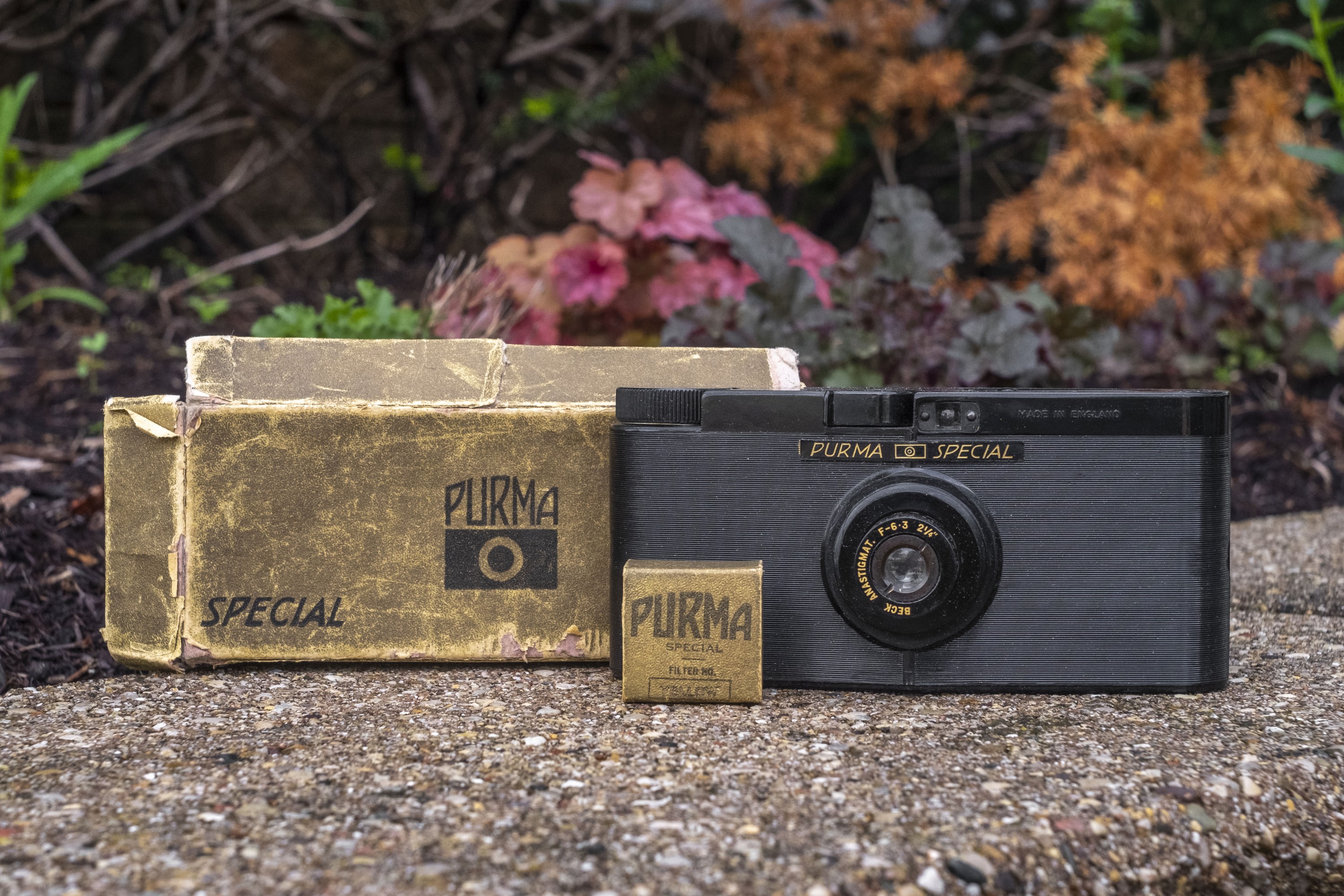
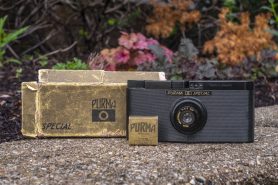
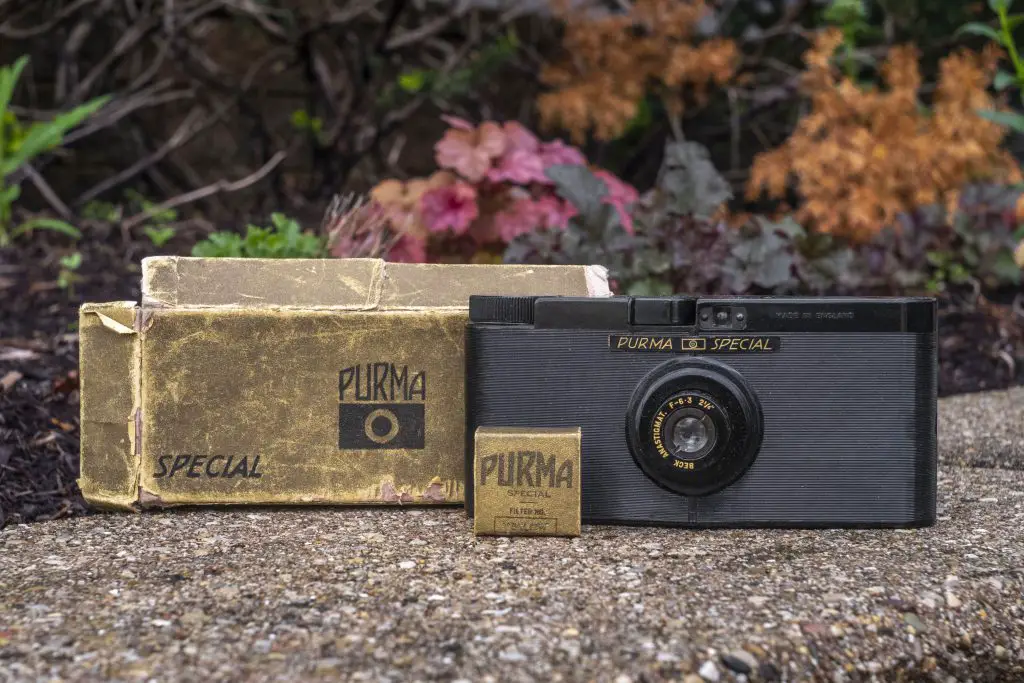
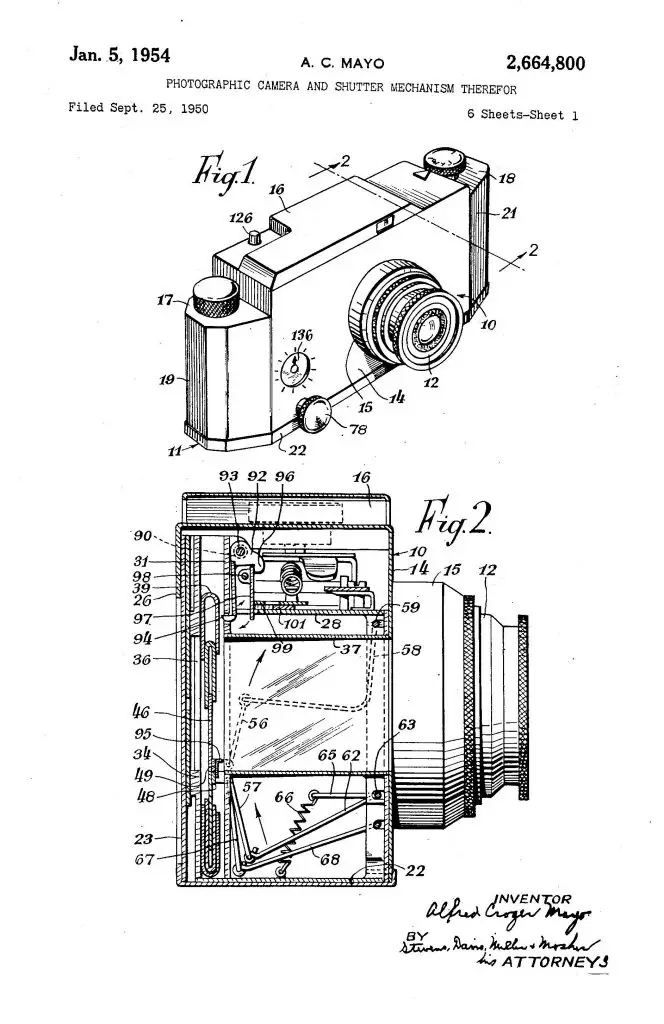
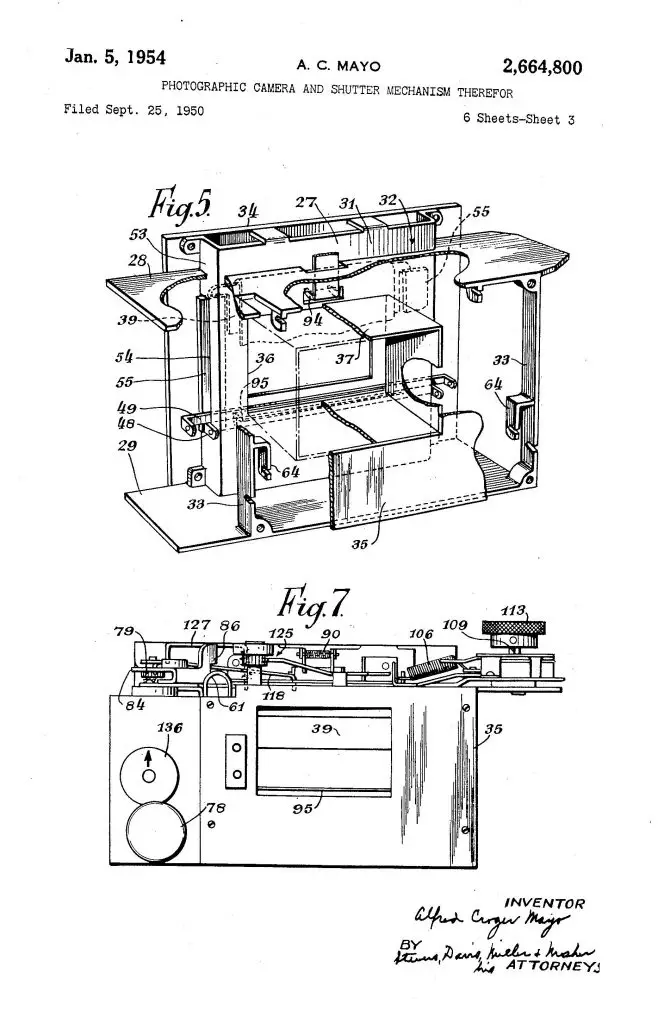
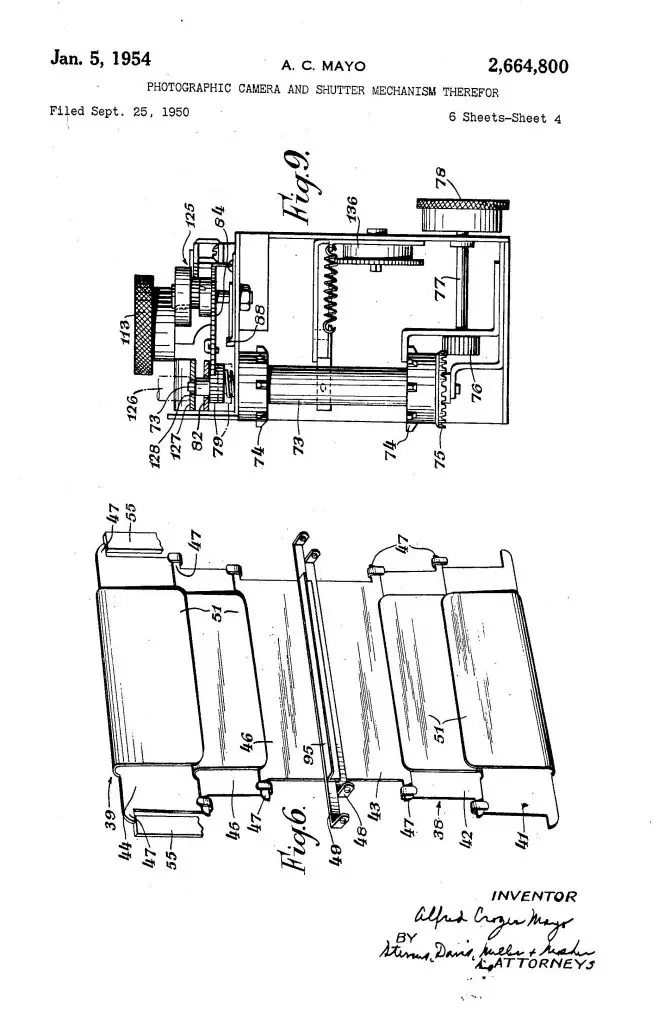












Great review, once again. The Purma is a fantastic example of thinking out of the box (4×4) in this case.
Is it coincidence the 35mmc just posted (a week or so ago) a 5 frames… post with the same camera? It’s an intriguing and attractive little camera for sure that was completely unknown to me. Thanks for your usual high quality and in-depth review Mike
Definitely just a coincidence, unless Hamish saw my earlier review on casualphotophile and then did his, only to have me follow up with my longer version of the review today! 🙂
Fine review of a unique design, Mike. I had one of the Specials for a while and would caution buyers to take extra care, after loading film, to reinstall the back right side up. If reattached inverted, the back can easily fall off [no fair asking how I know this!] There is a tiny arrow and (if I recall) wording near the pressure plate, directing the user which way is up.
Great post on a very cool camera. I have a Purma Plus and have shot a few successful rolls with it. It is a cool camera system.
There is a recent great reference available on Amazon for less than $15, “The Purma Camera Book.”
Well, you’ve done it again, Mike, enticing me to acquire a camera from one of your excellent reviews! I knew about the Purma camera when I took up the hobby in around 1960, but I wanted a focusing lens, wider range of shutter speeds, and it had to be 35mm, and something that looked more like a proper camera. And 127 film was reminiscent of plastic Kodak Brownies.
How times change. Now I will add film cameras to my collection for nothing other than quirks they may possess. And these Purmas are quirky, to say the least. I did look for the classic Special in bakelite, but many of these looked “distressed” as auctioneers here like to say, and for the better ones the asking price was too high. I wanted a working model, for display, so condition was important. As it turned out, I spied an almost mint Plus model with case going for a reasonable sum and at the lower end of the price range.
This arrived the other day and is indeed in extremely clean condition, with no signs of any impact damage. This is a late model, with what looks like a smooth “Hammerite” coating so the aluminium body shows no corrosion. A little disappointingly the view through the v/f is afflicted by the eyepiece having a very cloudy appearance such that it is completely unusable. Also I found the Plus is surprisingly heavy.
Going through the motions, the loudness of the shutter was unexpected, as was the vibration of the body as it closed, no doubt due to the weight of the ballast used for the variable speeds.
Hello,
I am certainly late in pinpointing the noticeably uneven exposure made by Purma cameras, a feature that came to my attention only recently, just by looking in other people photos in various web pages, particularly in sunny shots (presumably exposed at the camera’s “FAST” shutter speed): the problem is typically manifested as overexposure of the bottom picture part, gradually turning to an underexposed upper part.
I believe that this should seen as an unfortunate intrinsic design fault of this rather unique and strange curved focal plane shutter, attributed to the fact that on releasing the shutter ITS TWO METAL PLATES START AN ACCELERATED MOVEMENT AT THE SAME MOMENT, WHILE MAINTAINING A SLIT OF CONSTANT WIDTH BETWEEN THEM. So, the acceleration of the two metal plates across the film gate results in progressively lower exposure times for the currently exposed film strips behind.
Contrary to the same nature of accelerated movement of their spring-loaded curtains in typical focal-plane shutters, the above uneven exposure problem is not present, in either mechanical or electronic ones, because DUE TO THE VERY FACT THAT THE SECOND CURTAIN STARTS MOVING LATTER, THE SLIT BETWEEN THE TWO CURTAINS GRADUAL INCREASES DURING THE EXPOSURE TIME. So, the combined result of a) the accelerated movement of curtains, and b) the simultaneous gradual increasing of the curtains slit during their travelling, is that the sequential exposure of each film strip behind the curtains is here kept equal!
Dimitris
Dimitris, you make a perfectly valid point, and is one that should be taken into consideration in any camera with a focal plane shutter that needs to start and stop while the exposure is being made. Although what you said is true, I suspect the target audience of the Purma Special, which was a budget camera aimed at the amateur photographer, likely didn’t care about these sort of things. Certainly a pro would use something more capable than a Purma Special, but for the people who bought one, I am certain they were pleased with the image quality.